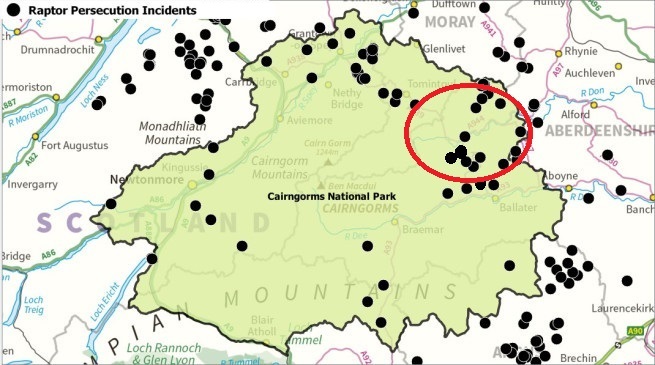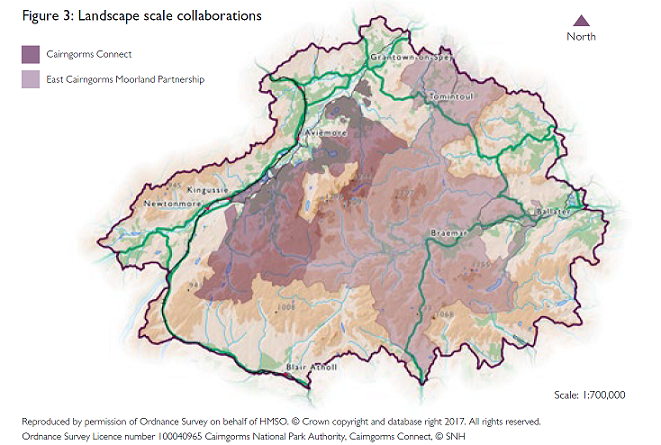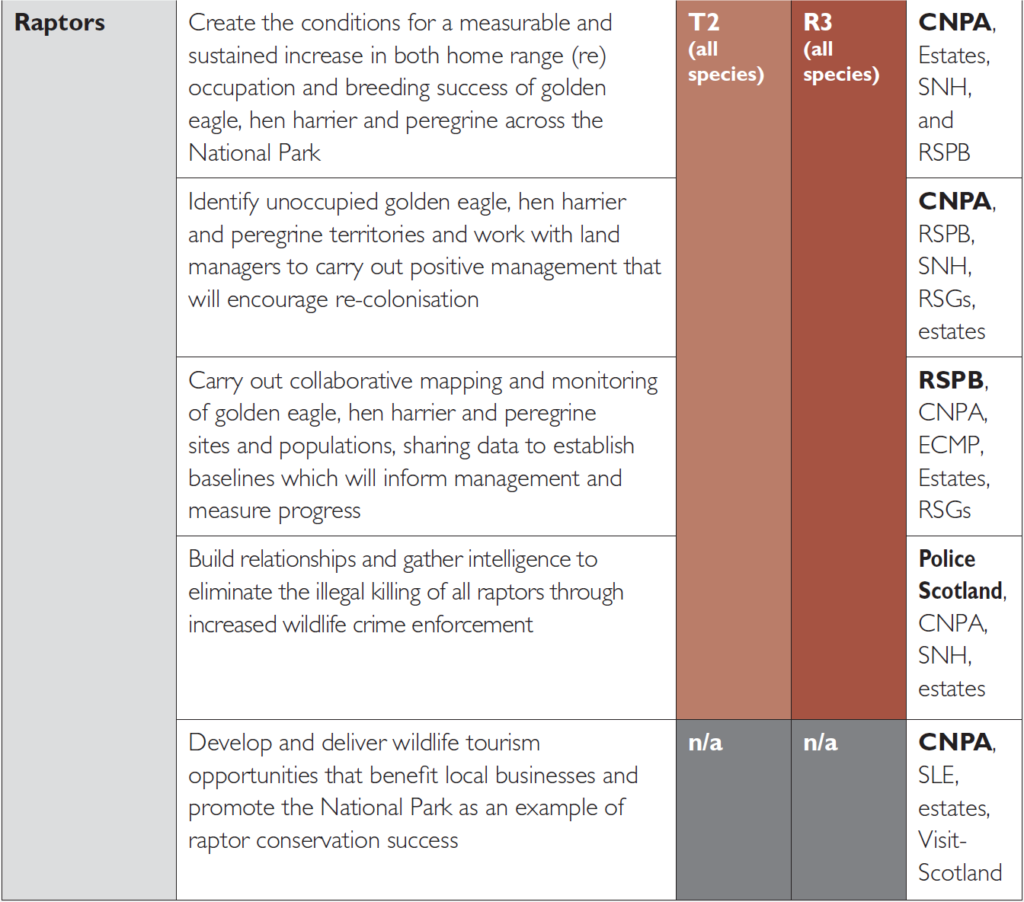On the same day, 24th May, that the Cairngorms National Park issued a news piece entitled Our National Treasures about the European Day of Parks, the police issued a news release about four geese that had been found poisoned near Loch Gynack by Kingussie at the end of April. This received excellent coverage on Raptor Persecution Scotland (see here). In the case of Cairngorms wildlife, the description of European Day of Parks as “a commemorative day for Protected Areas across Europe” seems apt. Its a National Park which, despite its professed good intentions, is fundamentally failing to protect wildlife.
Three days earlier Raptor Persecution Scotland had blogged about the disappearance of yet another Hen Harrier on the north eastern side of the National Park (see here). This young Hen Harrier had been born on the Mar Lodge Estate, where it had been tagged, and spent the previous 3 weeks in the Strathdon area before disappearing.

What Raptor Persecution Scotland did not say was that three of the estates on the western fringes of the red circle denoting Strathdon, Glen Avon, Glenlivet and Invercauld, are members of the east Cairngorms Moorland Partnership:

The East Cairngorms Moorland Partnership is the CNPA’s preferred vehicle for demonstrating improved moorland management within the National Park part of which is about “Eliminating the illegal killing of raptors and increasing raptor populations.” Assuming the hen harrier was killed on one of the Strathdon estates, the Partnership would appear to be having NO influence on its neighbours. Not even Prince Charles, who owns Delnadamph, a sporting estate on the upper reaches of Strathdon.
Sporting estates follow the example set by the Royal Family. While Prince Charles is only too happy to talk to the media about red squirrels (see here), he appears to keep his silence when it comes to raptors. Only last year, another hen harrier, disappeared on the border of Delnadamph (see here). Until Prince Charles speaks out or the National Park takes control the slaughter in Strathdon will, I am afraid, continue.
The CNPA’s current policy to end raptor persecution in the National Park was set out in its National Park Partnership Plan 2017-22. This was re-iterated in the fourth action in the Cairngorms Nature Action Plan launched on 1st March this year:

The first and last action in this chart were not in the draft Nature Action Plan (see here)) and added after/as a result of the public consultation. The main problem with the action to eliminate raptor persecution is that it depends on voluntary measures and “relationship building”. You cannot build relationships with landowners who are out of control, who perceive themselves as being above the law and knowing best. That’s why the current National Park Partnership Plan is failing to deliver what the Park Board – and most of the population of Scotland – want.
Its now time for the CNPA Board to review the plans it has in place for tackling wildlife crime and the wider land-use questions that underpin this (see here). The current strategy clearly isn’t working and, in such circumstances, any reasonable organisations would be reviewing the mechanisms it has identified for achieving its aims. In this case more special constables, partnership working and improved satellite tagging. The solution lies in the Cairngorms National Park Authority being far more assertive with landowners – a challenge to Prince Charles to commit to working with them to end raptor persecution in Strathdon would be a start – and to back this up with enforcement action and the introduction of new bye-laws which control what landowners are allowed to do on their land.
Its no coincidence, I believe, that Loch Gynack, where the poisoned geese were found, is also at the centre of a large area on the western side of the National Park where the sporting estates and intensifying their management of the land (introduction of red legged partridge, muirburn, unlawful bulldozed roads up into the Monadhliath etc). The CNPA’s approach to this has been to try and work in partnership, to persuade landowners to do the right thing.
That approach has been misguided and counter-productive. It has given landowners and their agents the message that, as along as they give a nod here and there to the need for change, they don’t really need to alter the way they manage land because when push comes to shove the CNPA is wedded to the voluntary approach. Its therefore extremely unlikely to take compulsory enforcement action against them. This is not how you gain the respect of the rich and powerful. The landowners concerned must be delighted and reassured by the lack of any news release from the CNPA about the latest two wildlife persecution incidents featured here.
Unfortunately the CNPA through its current approach is, I believe, inadvertently creating the very environment which causes the problems it professes to want to address. The time for change is now.
The silence from the Royal Family on the issue of illegal persecution of wildlife in Scotland is deafening. At a time when the climate change emergency requires a fundamental re-think of the way our uplands are managed, members of the Royal Family are nowhere to be seen Too many of them still follow the attitudes and behaviour laid down by Queen Victoria. Delnadamph and Balmoral should point to the future – no more muirburn and so called “pest” control and no more over grazing by red deer – we need naturally regenerating native pinewood on the slopes of Lochnagar, not herds of starving deer.
why don’t you have a wee word with Chris Packham and his ilk who are encamped up there doing springwatch … give him a wee nudge.
I don’t know Chris but am pretty sure he is aware of the latest issues and the question is what his BBC bosses will allow him to do. Viewers can help by sending stuff into Springwatch asking them to cover wildlife persecution in the National Park. Its a good idea though and I will have a go!